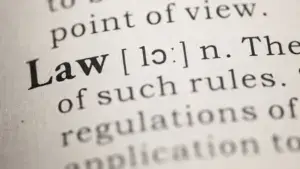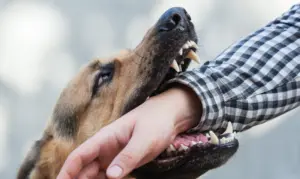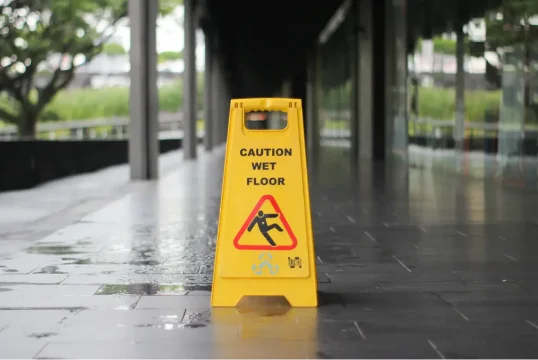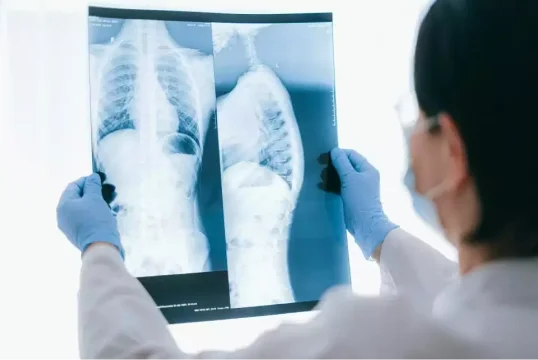When a dog bite happens, life can change quickly. ER visits, antibiotics, follow-up appointments, a changing scar in the mirror, sleep that won’t come, and the quiet stress of walking past a gate or a park, we understand it’s a lot.
While you focus on healing, West Coast Trial Lawyers does the hard and necessary work: finding the owner, securing the insurance information, preserving the public-health and incident records, and building the proof that turns a painful story into a strong claim.
Call (213) 927-3700 whenever you’re ready to talk to a Los Angeles Dog Bite Lawyer. Remember, the consultation is free, and there’s no fees unless we win. We are here to support you every step of the way.
Why California Law Is on Your Side

California uses strict liability for bites. If a dog bites you in public or when you’re lawfully on private property, the owner is responsible (even if it was the dog’s first incident.) The rule lives in California Civil Code §3342 and it’s the backbone of most claims. In L.A., there’s also a six-foot leash rule in public areas (outside approved off-leash zones). When a dog is off-leash or not under control, that violation supports a negligence claim under L.A. Animal Services’ leash law guidance.
There are narrow exceptions for police or military K-9s performing official duties; our LA Dog Bite Lawyers evaluate those facts and the agency’s policy to see whether a civil claim is still possible.
First Steps After a Dog Bite in L.A.
Get medical care now. Dog bites can get infected fast. Follow your provider’s plan and keep every discharge sheet and bill. L.A. County requires 10-day observation/quarantine of biting dogs or cats to rule out rabies—those records help your case. You can read the county’s protocol at L.A. County Public Health – Rabies Control.
Report the bite. Los Angeles County asks that animal bites to people be reported so they can locate the animal and monitor quarantine. Start with Rabies Control, or tell us and we’ll handle it. Here’s how to get a copy of a police report without getting lost in the process.
Save simple evidence. Photos of wounds (day 1 and as you heal), the dog (if safe), the location, torn clothing, and any communications with the owner. Get the owner’s name, address, and insurance info. If you couldn’t collect it at the scene, we’ll track it down. Ask that the footage be saved before it’s overwritten. This straightforward walkthrough on preserving surveillance video helps if you’re doing early legwork while we open the file.
Who Actually Pays for a Dog-Bite Claim?
In most cases, insurance pays. Homeowners or renters insurance is common, and some owners carry an umbrella policy. Policies sometimes contain breed exclusions or other defenses; we obtain the full policy and endorsements and press for complete disclosure.
People often ask what “damages” really means. Quite simply, it covers both money you can count (bills, lost pay) and real harms that don’t show up on a receipt (pain, scarring, anxiety). If you want a simple explainer, our overviews of economic damages and non-economic damages break down how California recognizes the full impact of an injury.
How We Prove Responsibility
We tie the facts to state law. We show where the bite happened, that you were there lawfully, and who owns the dog, then apply Civil Code §3342.
Add negligence where it fits. Off-leash in a public place? No control? Prior complaints? We use L.A. Animal Services leash guidance, incident reports, and witness statements to explain why the bite was preventable. We also pull department records through L.A. Animal Services resources and, when applicable, county files from Dangerous Dog Investigations.
Landlord / HOA / short-term rental angles. If a property owner or HOA knew a tenant’s dog was dangerous and had the power to make the dog leave, they may share fault. That’s the rule from Uccello v. Laudenslayer. We look for emails, prior notices, and lease terms that prove knowledge and control.
Our Los Angeles Bite Attorneys also obtain public-health record and the bite report with quarantine documents from L.A. County Public Health – Rabies Control. Those records often move adjusters to see what really happened.
On the medical side, infections are common and can become serious. This quick explainer on dangerously common dog-bite infections helps you understand why early treatment and keeping those follow-up notes really matters to both your health and your claim.
What Your Los Angeles Dog Bite Case Can Include (Damages)
- Medical bills now and later– ER/urgent care, antibiotics, plastics consults, therapy, and future care like silicone therapy, laser treatments, steroid injections, or surgical scar revision.
- Lost income– Pay you missed while recovering and, if needed, reduced earning capacity documented by your employer and our experts.
- Non-economic harm– Pain, suffering, disfigurement/scarring, sleep problems, anxiety around dogs, and activity limits. These are real losses California law allows you to recover.
- Other Damages– Travel to appointments, childcare during treatment, and property damage (e.g., torn clothing, broken glasses). Our Los Angeles Bog Bite Lawyers find every angle of damages you incurred and make sure those are collected and represented in your claim.
Scarring & Appearance After a Dog Bite
Dog bites leave irregular, high-tension wounds that evolve over 12–18 months. We keep it simple:
- Photo plan: day 1, week 1, week 3, then monthly (same lighting and angle, with a small ruler in frame.)
- Short video for facial/hand injuries: smile, brow raise, grip—static photos miss function loss.
- Skin-of-color considerations: we document pigment changes and any keloid risk to support future-care costs.
- Plastic-surgery opinions when needed: we coordinate consults with board-certified specialists and get written plans for staged care.
We align that medical timeline with the county’s 10-day observation documentation from Rabies Control to show cause and effect.
You might also hear threats that a dog “will be put down.” That fear can make conversations with an owner difficult. This WCTL piece, are dogs put down for biting someone? clarifies what the law actually says and helps keep negotiations focused on accountability and care
Special Situations We Handle A Lot
- Bites in parks, on sidewalks, and at beaches– The leash rule applies in most public places; off-leash incidents usually increase settlement value because they’re so preventable.
- Apartment or Airbnb bites– We pursue the owner first, then evaluate landlord/host liability (knowledge + power to remove the dog).
- Bites at work (delivery, rideshare, service workers)- You may have a workers’ comp claim and a third-party claim against the dog’s owner/property manager. We coordinate liens so you keep more of your recovery.
- Police K-9 cases– We review the facts against §3342’s K-9 exceptions and the agency’s policy to see if a civil claim is available.
Local Processes That Create Evidence
Serious incidents can trigger dangerous-animal hearings with the City. Those files, complaints, officer notes, photos can be powerful. The County’s Dangerous Dog Investigations unit also compiles reports we request early. Our Los Angeles Dog Bite Lawyers align that timeline with the County’s 10-day observation/quarantine from Rabies Control and your medical records, so the paper trail tells a single, clear story.
Deadlines You Can’t Miss
For most California injury cases, you have two years from the date of the bite to file a lawsuit under Code of Civil Procedure §335.1. If a public entity is involved (for example, the bite happened on city property or a government employee’s dog is at issue), you must first file a Government Claim within six months under Gov. Code §911.2. Call our Los Angeles Dog Bite Attorneys quickly so we can protect your rights.
What Our Los Angeles Dog Bite Lawyers Do For You
Our Los Angeles Dog Bite Attorneys shield you from the insurer’s tactics, gather medical records and public-health files, request animal-services histories, track down witnesses and video, and, when needed, coordinate plastic-surgery opinions so future care is taken seriously. If you’re collecting paperwork at home, this quick checklist on what documentation helps win an injury case keeps everything in one place.
What We Need to Get Started
- Photos of your injuries (initial and during healing)
- Any info on the dog/owner and insurance
- ER/urgent care paperwork and bills
- Names of witnesses or building managers/HOA, if available
No worries if you don’t have everything, just call us and we’ll handle the legwork.
Talk to a Los Angeles Dog Bite Lawyer Today
You deserve clear answers and a plan that’s easy to follow. We’ll listen, explain your options so we can move fast to protect your claim. Our attorneys are here for you!
Call (213) 927-3700 or send a message for a free, no-obligation consultation. Our Los Angeles Dog Attorneys represent clients across L.A. from Downtown to Venice, Westlake to Sherman Oaks.
Frequently Asked Questions About LA Dog Bites
Do I Have to Prove the Dog Was Off-Leash to Win?
No. The owner is liable for bites under Civil Code §3342, even if there were no prior incidents. A leash-law violation adds negligence and typically increases the value of the case.
Do I Need to Report the Bite?
Yes. L.A. County requires reporting, and biting dogs/cats are usually observed for 10 days to rule out rabies—see Rabies Control. Reporting protects your health and creates helpful records.
What if the Owner Says, “It Wasn’t My Dog—I Was Just Watching It”?
Strict liability targets owners for bites, but a regular keeper/handler can still be liable for negligence (failure to control, leash violations). Our LA Dog Bite Lawyers often pursue both paths.
Will Insurance Cover This?
Often yes. Homeowners/renters insurance pays many claims, and some owners have umbrella coverage. We demand full policy disclosure and watch for exclusions.
Is Rabies Common in LA?
Human rabies is extremely rare here. Still, public health requires the 10-day observation/quarantine for biting dogs and cats—follow your doctor’s advice and see Rabies Control.
How Long Will This Take?
Simple cases can resolve in a few months; complex scarring cases may take longer so we can document healing and future-care needs. We’ll discuss timing up front so you’re never wondering what’s next. For a realistic look at pacing, see how long settlements take.










































































